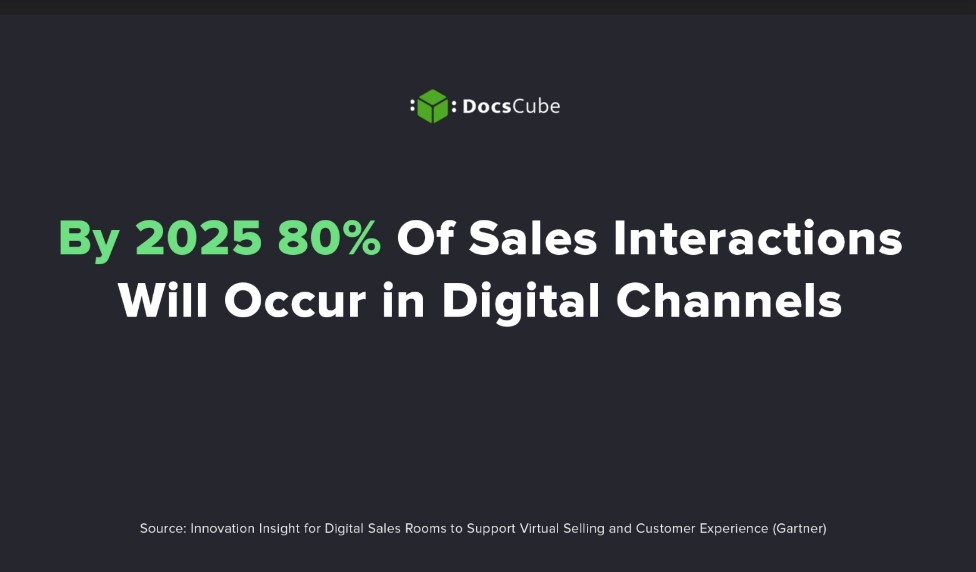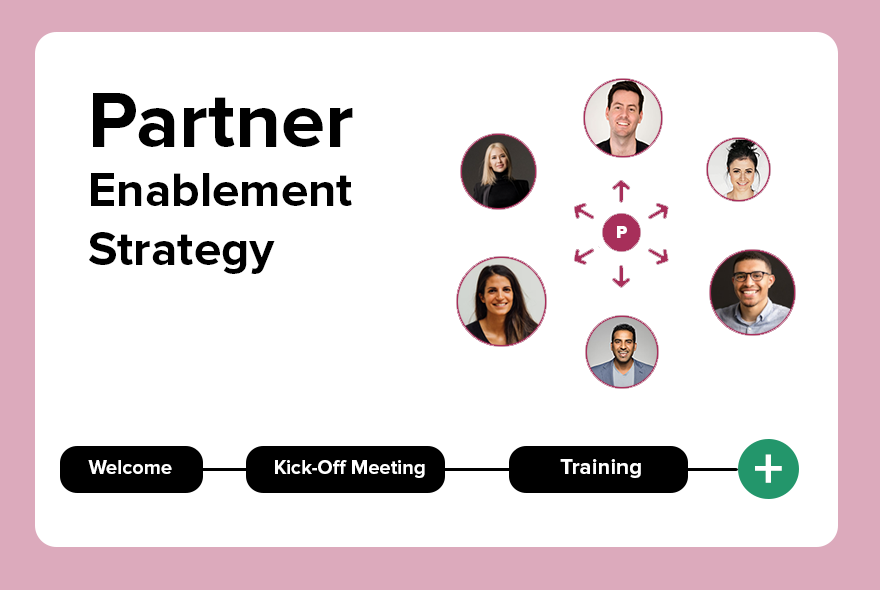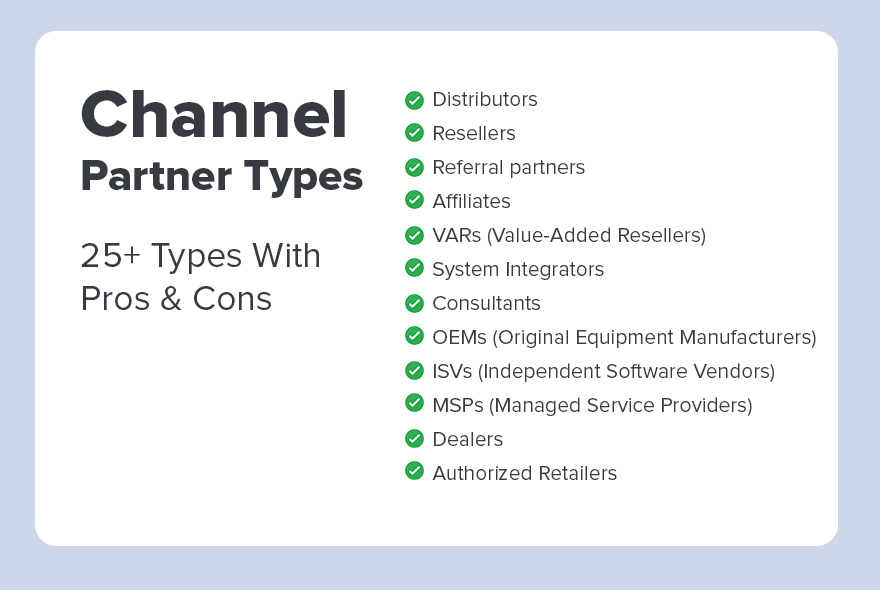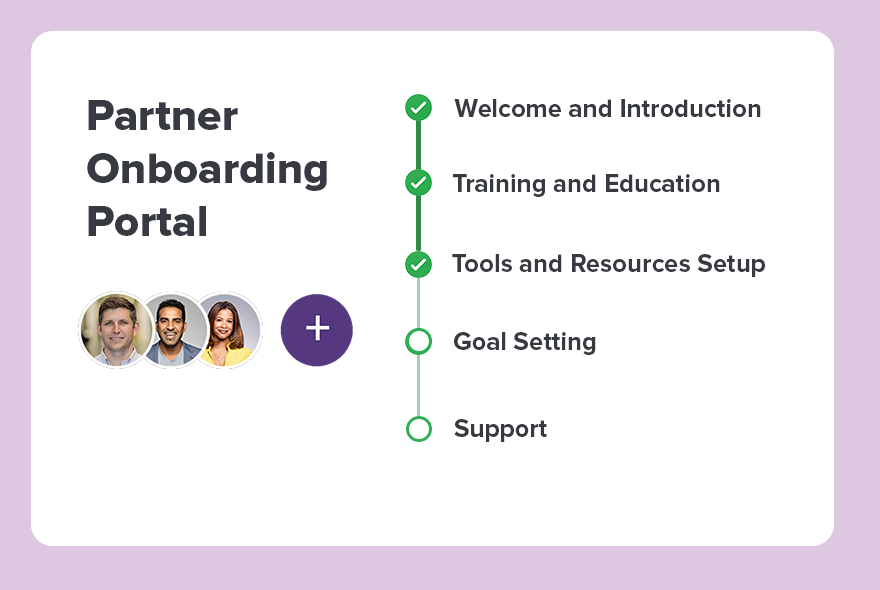Unlocking the potential of your business begins with understanding the B2B sales cycle.
This comprehensive journey is filled with unique challenges and opportunities that can directly influence your bottom line.
In this detailed exploration, we break down the B2B sales process step by step, uncovering the strategies and tools you need to thrive.
Understanding the Lengthy B2B Sales Process
The B2B sales process is intricate, lengthy, and often complex. Unlike conventional consumer transactions, B2B sales involve multiple stages and numerous stakeholders.
With typically higher transaction values, the emphasis on relationship building and strategic decision-making is intensified. Each step in the sales process, from prospecting to closing the deal, requires careful planning and execution.
“Much of the sales enablement work we do for B2B businesses is geared towards helping steer them through long and challenging sales cycles,” according to Donald Chan, founder of IMPACT, a leading B2B marketing and content agency in Singapore.
Navigating B2B sales cycle is like embarking on a detailed journey, far from the straightforward path of everyday consumer sales. Here, you dive into a world where sales unfold through several stages, each involving a cast of stakeholders.
Given the higher stakes typically associated with B2B transactions, the spotlight shines brightly on forging strong relationships and making strategic moves.

Let’s Break B2B Sales Cycle Down
1. Understanding Needs
Grasping the unique challenges of each client is crucial. This knowledge enables a customized strategy, transforming products into solutions.
2. Communication
The bridge between offer and need. Clear, transparent dialogue aligns expectations, ensuring everyone is on the same page.
3. Technology Integration
Utilizing CRM systems, digital sales rooms and other tools enhances efficiency. It streamlines the sales cycle, improving tracking and forecasting.
4. Feedback Loop
Post-sale engagement is key. Collecting insights leads to service improvements and bolsters customer satisfaction.
In sum, the B2B sales cycle landscape, while complex, is ripe with opportunities for establishing deep, meaningful connections. By focusing on tailored solutions, leveraging technology, and valuing feedback, businesses can forge lasting partnerships that pave the way for mutual success.
Try DocsCube Deal Rooms today and take a significant step towards optimizing your B2B sales process.
Eliminate delays by sharing a mutual action plan with all key stakeholders. Standardize processes, automate notifications, and create a transparent onboarding plan.
Try Now ― It’s FreeThe Significance of the B2B Sales Cycle in Your Sales Strategy
A well-structured B2B sales cycle is an integral part of any successful sales strategy. It provides your sales team with a clear roadmap, streamlining operations, and enabling more efficient resource allocation.
- Customization
- Engagement
- Optimization
Further, understanding your sales cycle facilitates more accurate forecasting, driving strategic decisions, and giving your business a competitive edge.
- Adaptability is key. Each client brings unique needs and challenges, demanding flexibility in your approach. Tailoring your sales strategy to meet these varying demands ensures relevance and resonance.
- Technology’s Role cannot be overstated. From CRM to analytics, the right tools not only simplify tasks but also uncover insights. These insights lead to smarter strategies and, ultimately, stronger relationships.
- Training and Development ensure your team is equipped. Knowledgeable sales representatives who understand the nuances of your product and market can significantly impact your success rate.
- Feedback Integration creates a loop of continuous improvement. By actively seeking and applying customer feedback, your sales cycle becomes a dynamic, evolving entity. This responsiveness to feedback signals your commitment to customer satisfaction and can significantly enhance loyalty.
In blending these elements, the B2B sales cycle becomes more than a process—it transforms into a strategic asset. This dynamic approach not only fosters a deeper understanding of your market but also positions your business as a flexible, customer-focused leader, adept at navigating the complexities of the B2B landscape.
Read more about improving sales cycle with a B2Bsales process
Facts About the Customer Journey in B2B
- It’s not linear and simple. It’s a complex, multidimensional mess
- There’s no such thing as impulse buy – unless you have a $49.99 price tag.
- 95% of B2B buyers are not in the buying mode.
- 5% of buyers who ARE ready to buy usually choose one of the few vendors they’re most familiar with.
Source: Ognjen, Honey Stack
Differentiating Between B2B and B2C Sales
While at their core, both B2B and B2C sales have the same goal – to sell a product or service – the approaches and techniques involved are markedly different.
B2B sales often have a longer cycle, larger transaction values, and multiple decision-makers. In contrast, B2C sales are generally direct, shorter, and involve individual consumers.
In B2B, success hinges on understanding business needs and offering tailored solutions. It’s all about strategic alignment, with a focus on long-term relationships and detailed consultations.
- Rapport
- Customization
- Patience
B2C sales strategies aim for a personal connection, emphasizing seamless experiences and emotional resonance.
The goal is to streamline the buying process, making it as quick and enjoyable as possible.
- Emotion
- Convenience
- Speed
Key B2B Challenges:
- Complex decisions
- ROI justifications
- Extended sales cycles
B2C Nuances:
Understanding these distinct paths helps in crafting approaches that resonate effectively with the intended audience.
Harnessing the Power of Prospect Preparation and Qualification
Prospect preparation and qualification are pivotal stages in the B2B sales process. Your sales team can optimize their efforts and increase the likelihood of successful conversions by identifying and focusing on high-quality leads.
Well-prepared prospect is a stepping stone towards a fruitful business relationship.
Navigating the Complexities of B2B Payment Processes
The B2B payment process is often more complex than its B2C counterpart. With larger transaction values, payment terms can be extended or deferred, adding an extra layer of complexity.
Understanding these processes and being able to navigate them successfully is vital for a smooth sales process and positive customer relations.
The Importance of a Continually Renewed Sales Pipeline
Given the extended nature of the B2B sales cycle, maintaining a healthy pipeline is crucial. Continual prospecting and qualification ensure a steady flow of opportunities, aiding business growth and sustainability. A robust sales pipeline is a testament to a healthy, forward-looking business.
Diversify Leads: Prioritize the diversification of your pipeline to mitigate risks and stabilize revenue streams. Ensure that your leads are varied, not just in quantity but in quality, matching your ideal customer profile.
- Analyze and Strategize: Regular analysis of your pipeline allows for strategic adjustments. Understand which prospects are progressing and which aren’t, reallocating resources to where they’re most effective.
- Engage and Nurture: Develop tailored engagement strategies for different stages of the pipeline. This could involve personalized communication, providing valuable insights, or demonstrating your solution’s direct impact on their business.
- Review Metrics: Implement a system for regularly reviewing key performance metrics of your sales pipeline. This step is crucial for identifying bottlenecks, understanding conversion rates, and spotting trends.
- Optimize Processes: Use the insights gained from metrics and analysis to optimize your sales processes. This might mean refining your prospecting techniques, improving lead qualification criteria, or enhancing your engagement tactics.
- Focus on Growth: With a well-managed pipeline, ensure you’re not just maintaining but actively seeking opportunities for growth. Explore new markets, consider upselling or cross-selling to existing clients, and always be on the lookout for feedback to refine your approach.
A strategic, step-by-step approach to pipeline management not only supports business sustainability but also sets the stage for continuous growth and efficiency improvement.
Simplifying the B2B Buyer Experience
To further enhance the B2B buyer experience, incorporating streamlined communication and document management tools into the sales process is critical. DocsCube Deal Rooms offer a simplified solution, tailored to meet the intricate needs of B2B transactions.
These digital rooms facilitate an organized, efficient exchange of information, essential for the complex decision-making processes characteristic of the B2B landscape. By centralizing communication and document access, DocsCube Deal Rooms minimize the friction typically associated with the iterative nature of traditional sales cycles.
This platform supports real-time collaboration, ensuring all stakeholders remain aligned and informed, even when sales representatives are not physically present in the room. Such a cohesive environment significantly simplifies the buyer’s journey, enabling them to make informed decisions swiftly.
Moreover, the enhanced transparency and accessibility provided by DocsCube Deal Rooms foster a trust-based relationship between businesses. This trust is foundational in B2B transactions, where the stakes and investments are considerably higher, essentially selling your solution even when you’re not in the room.
In essence, by streamlining the decision-making process and enabling sales to continue in the absence of direct interaction, Deal Rooms not only enhance the buyer experience but also contribute to a more efficient, effective sales cycle.
- Streamlined Communication: Centralize all interactions to simplify the exchange of ideas and information, ensuring you’re always selling, even when not directly engaging with the buyer.
- Document Management: Maintain all relevant documents in one easily accessible location, enabling buyers to review information at their convenience.
- Real-Time Collaboration: Allow for immediate feedback and adjustments, keeping projects moving forward efficiently, and ensuring that sales momentum is maintained.
- Enhanced Transparency: Build trust through open access to information and updates, creating a transparent environment that supports informed decision-making.
- Simplified Decision Making: Provide a platform that supports quicker, more informed decision-making processes, improving the overall buyer experience and facilitating smoother progress towards a sale.
13 Minutes Of B2B Marketing Strategies
The Final Steps: Presentation, Offer Conclusion, and Customer Retention
The final steps in the B2B sales process are presenting the offer, concluding the sale, and retaining the customer. These stages require a well-crafted sales pitch, effective negotiation skills, and an ongoing customer service strategy.
Your goal is not just to close the deal but to build a long-term business relationship that yields recurring revenue.
To enhance the effectiveness of these crucial steps and to ensure smoother transitions from one stage to the next, consider incorporating DocsCube Deal Rooms into your strategy.
Our platform can significantly aid in presenting your offer in a clear, engaging manner, facilitate the conclusion of sales through streamlined communication and document management, and support customer retention efforts with its collaborative features.
Try DocsCube Deal Rooms today and take a significant step towards optimizing your B2B sales process.
Eliminate delays by sharing a mutual action plan with all key stakeholders. Standardize processes, automate notifications, and create a transparent onboarding plan.
Try Now ― It’s Free




